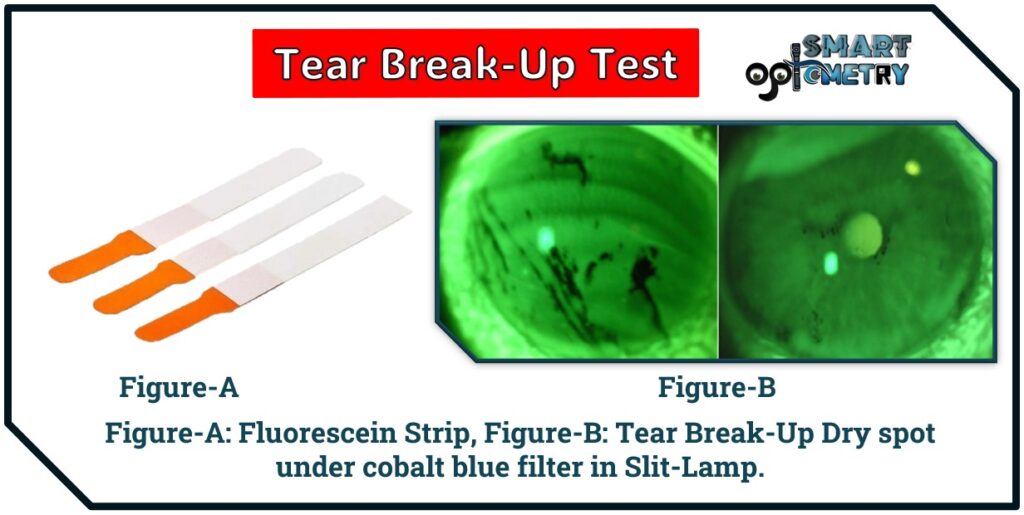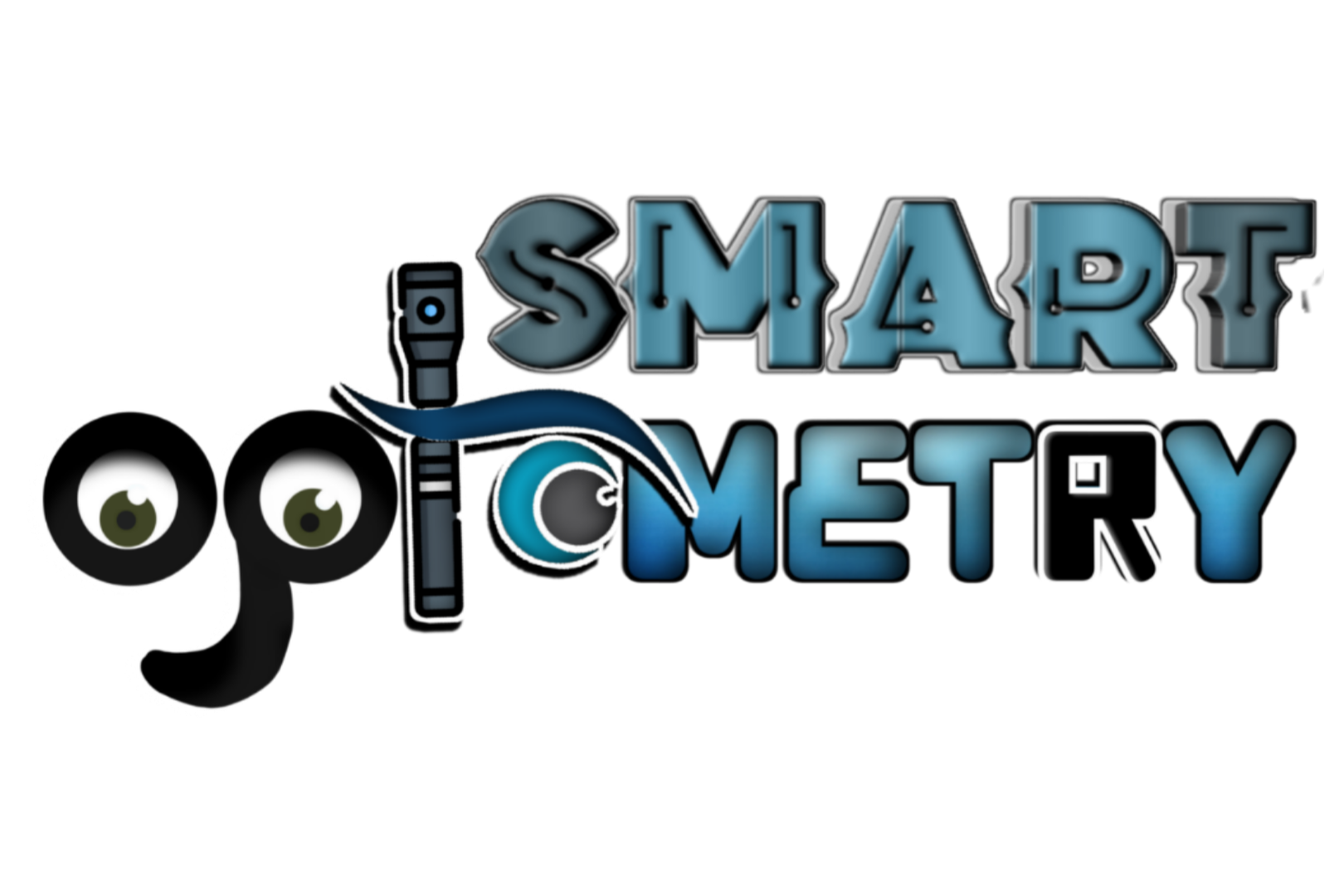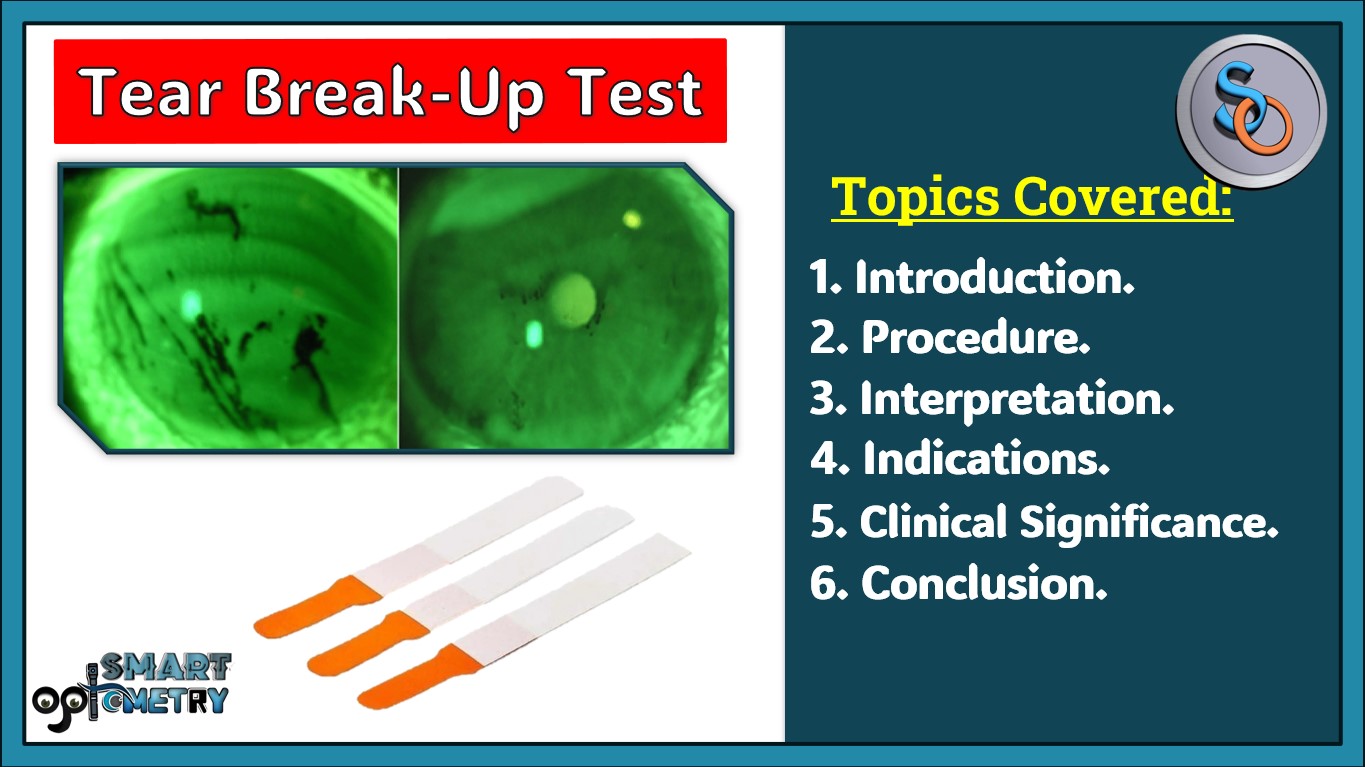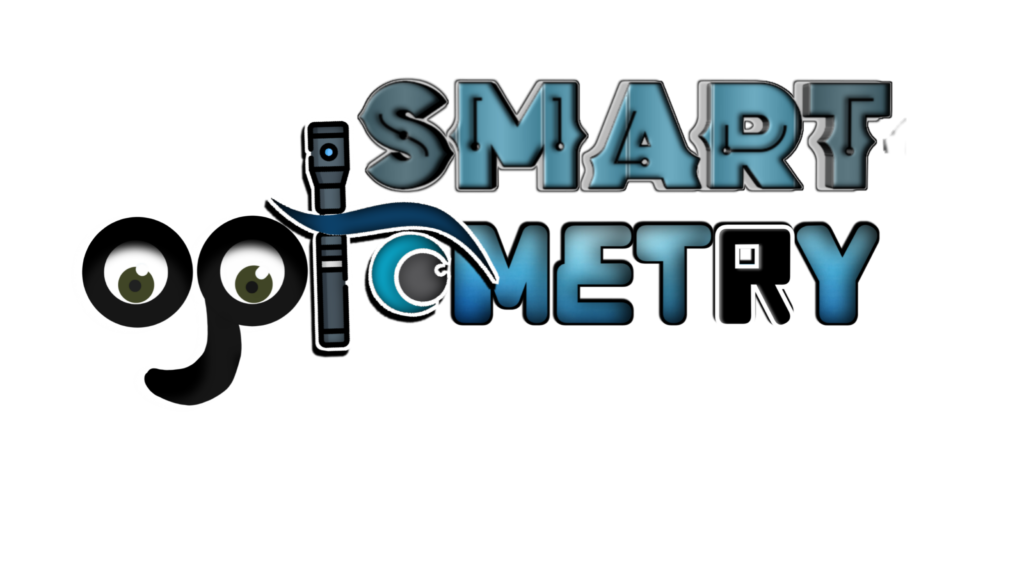What is Tear Break-Up Time Test?
- The Tear Break-Up Time (BUT) Test is a clinical assessment used to evaluate the stability of the tear film on the ocular surface, particularly in cases of dry eye syndrome.

Procedure of Tear BUT (Break-Up Time) Test:
- The patient is seated comfortably and asked to look straight ahead without blinking.
- A fluorescein dye (2%) solution or an impregnated fluorescein strip moistened with non-preserved saline is instilled into the lower fornix. Fluorescein dye is commonly used because it provides excellent visualization of tear film breakup.
- The patient is instructed to blink several times to ensure even distribution of the dye across the ocular surface.
- After the last blink, the clinician uses a blue light source (such as a cobalt blue filter on a slit-lamp biomicroscope) and observes the tear film through a microscope.
- The tear film’s breakup time is recorded as the interval between the last complete blink and the appearance of the first dry spot or disruption in the tear film detected by the clinician.
Interpretation:
- A normal TBUT is typically greater than 10 seconds. If the tear film remains intact for this duration, it suggests good tear film stability.
- A TBUT of less than 10 seconds indicates reduced tear film stability and is suggestive of dry eye syndrome, particularly evaporative dry eye.
- Shorter TBUT values may correlate with symptoms such as eye discomfort, blurred vision, and fluctuations in vision quality.
Indications of TBUT:
- The TBUT test is performed to assess the stability of the tear film, which is crucial for maintaining ocular surface health and clarity of vision.
- It helps in diagnosing evaporative dry eye, where there is an imbalance in tear composition or inadequate lipid layer, leading to rapid tear film breakup.
- The tear film BUT is abnormal in aqueous tear deficiency and meibomian gland disorders.
Clinical Significance TBUT:
- TBUT serves as an objective measure of tear film stability and can aid in diagnosing and monitoring dry eye disease.
- It complements other clinical tests for dry eye assessment, such as Schirmer’s test and ocular surface staining, providing valuable information about tear film dynamics.
- Serial TBUT measurements over time can help assess the effectiveness of dry eye treatments, such as artificial tears, lubricating eye drops, and therapies targeting meibomian gland dysfunction or inflammation.
- Check Our Courses: Ophthalmic Instrumentation, Clinical Refraction, Contact Lens, Binocular Vision, Dispensing Optics, MCQs in Optometry
- Download our App “Optometry Notes & MCQs” from Google Play Store.





1 Comment
Matchless theme, it is very interesting to me 🙂